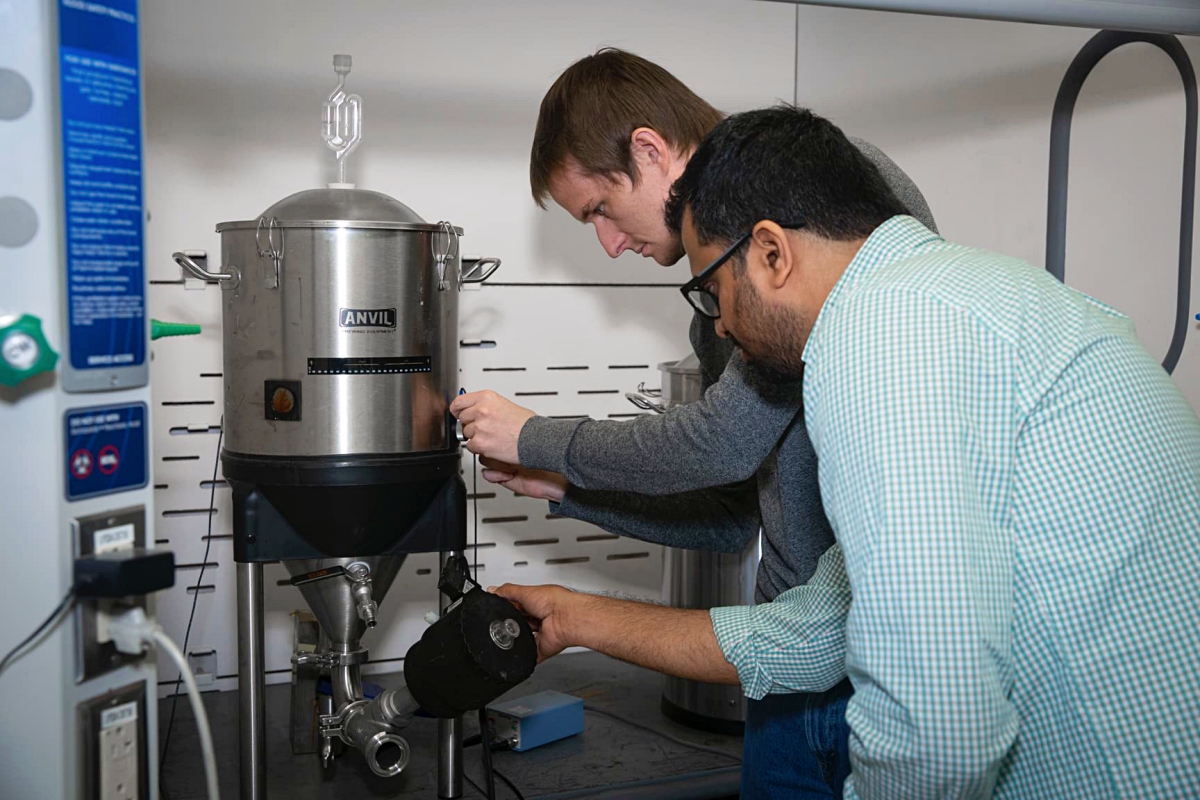
As a scientist on an acoustic-science research team at Los Alamos National Laboratory (LANL), and published in the Albuquerque Journal, Eric Davis has long been interested in acoustic sensor technology. Developments in this science apply to the oil and gas sectors and other industries, but we saw the potential in the brewing industry. Visiting craft breweries in the Denver area last year, as well as canvassing many of the breweries in New Mexico, the scientists were aware of their challenges and assessed the potential for acoustic-sensor technology in this fast-growing industry that nonetheless has complex technical challenges. It looked like a good fit of technology to a tasty application.
Brewing is a multi-step process. In the critical fermentation stage, yeast is added to a mixture of wort, which is an infusion of malt or other grains, and hops (a so-called slurry) within a stainless-steel vat. Inside the vat, yeast sets to work converting sugars in the wort to alcohol and carbon dioxide. Brewers often check progress manually by draining off the product to sample it.
With batches sometimes containing hundreds of gallons in larger industrial operations, the fermentation stage can take weeks. That’s plenty of time for something to go wrong — at the expense of the batch, the labour to produce and monitor the product and the availability of the equipment occupied by the beer-in-progress.
With a window into the problem, they returned to the lab and we embarked on developing a solution. Brewing beer proved to be a novelty at Los Alamos, but the physics of materials is a longstanding specialty. So in our unique pilot brewing operation, we developed the SoniView acoustic sensor system.
SoniView relies on a couple of key pieces of technology. Vibrations from a transducer attached to the front, the outer side of the vat send sound waves into the medium inside the tank. A sensor on the back, the outer side of the vat picks up the vibration and converts it to an electrical signal. Fed into an oscilloscope and a computer, the system provides visualizations and data on the progress of fermentation.
Knowing the distance from one side of the vat to the other, the “time of flight” it takes the sound wave to travel from the transducer to the back sensor helps determine the speed of sound through the liquid. That speed constantly changes as the beer ferments and the relative amounts of sugars, alcohol and other components change. Additionally, when the slurry is actively fermenting, the sound travelling through the liquid will be weaker because so much carbon dioxide is being produced. Carbon dioxide production drops off the longer the wort ferments, which is picked up by the acoustic sensors. Eventually, the yeast dies off and drops to the bottom of the vat as trub, a layer of sediment. The sensors provide continuous, real-time insight into the entire process.
Traditional brewing means periodically checking the fermentation by draining some product out during the process. SoniView’s monitoring capabilities provide the lynchpin for more efficient — and profitable — processes. Now data can be acquired in real-time, so labour that might otherwise be spent manually checking on fermentation is freed up for other tasks. SoniView also quickly and accurately determines the transition from yeast slurry to beer when dumping the yeast and closes the dump valve. This is especially important for larger breweries because slurry may require expensive handling and disposal. It also saves beer during the dump process.
